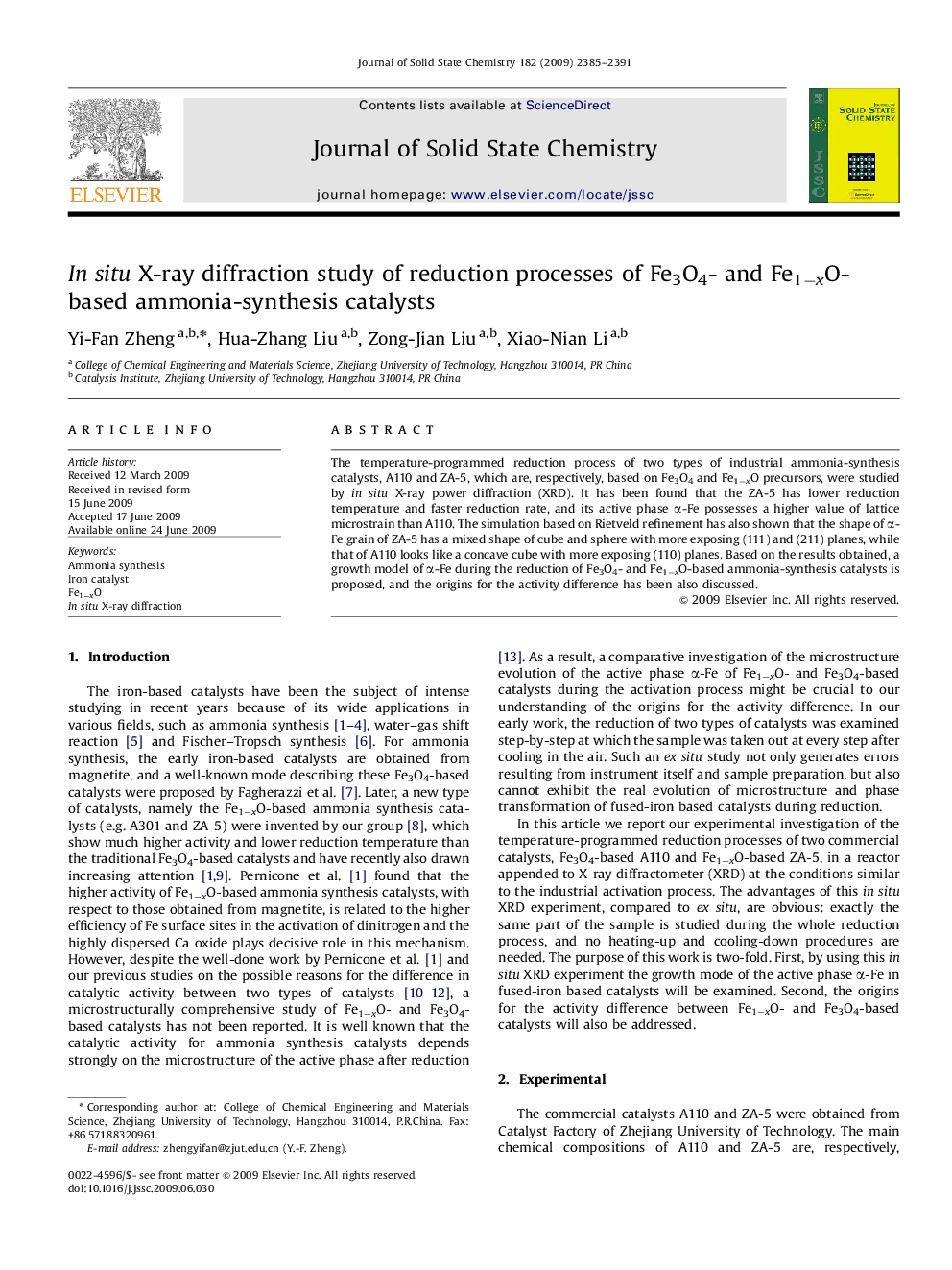| Article ID | Journal | Published Year | Pages | File Type |
|---|---|---|---|---|
| 1331528 | Journal of Solid State Chemistry | 2009 | 7 Pages |
The temperature-programmed reduction process of two types of industrial ammonia-synthesis catalysts, A110 and ZA-5, which are, respectively, based on Fe3O4 and Fe1−xO precursors, were studied by in situ X-ray power diffraction (XRD). It has been found that the ZA-5 has lower reduction temperature and faster reduction rate, and its active phase α-Fe possesses a higher value of lattice microstrain than A110. The simulation based on Rietveld refinement has also shown that the shape of α-Fe grain of ZA-5 has a mixed shape of cube and sphere with more exposing (111) and (211) planes, while that of A110 looks like a concave cube with more exposing (110) planes. Based on the results obtained, a growth model of α-Fe during the reduction of Fe3O4- and Fe1−xO-based ammonia-synthesis catalysts is proposed, and the origins for the activity difference has been also discussed.
Graphical AbstractA proposed growth model of active phase α-Fe during reduction. Due to H2 diffusing easily into the pores, reduction starts on outside and inside surface simultaneously to form “microcrystalline film”, and the particles shrink during reduction which results in breaking of the aggregated oxide particle.Figure optionsDownload full-size imageDownload as PowerPoint slide
